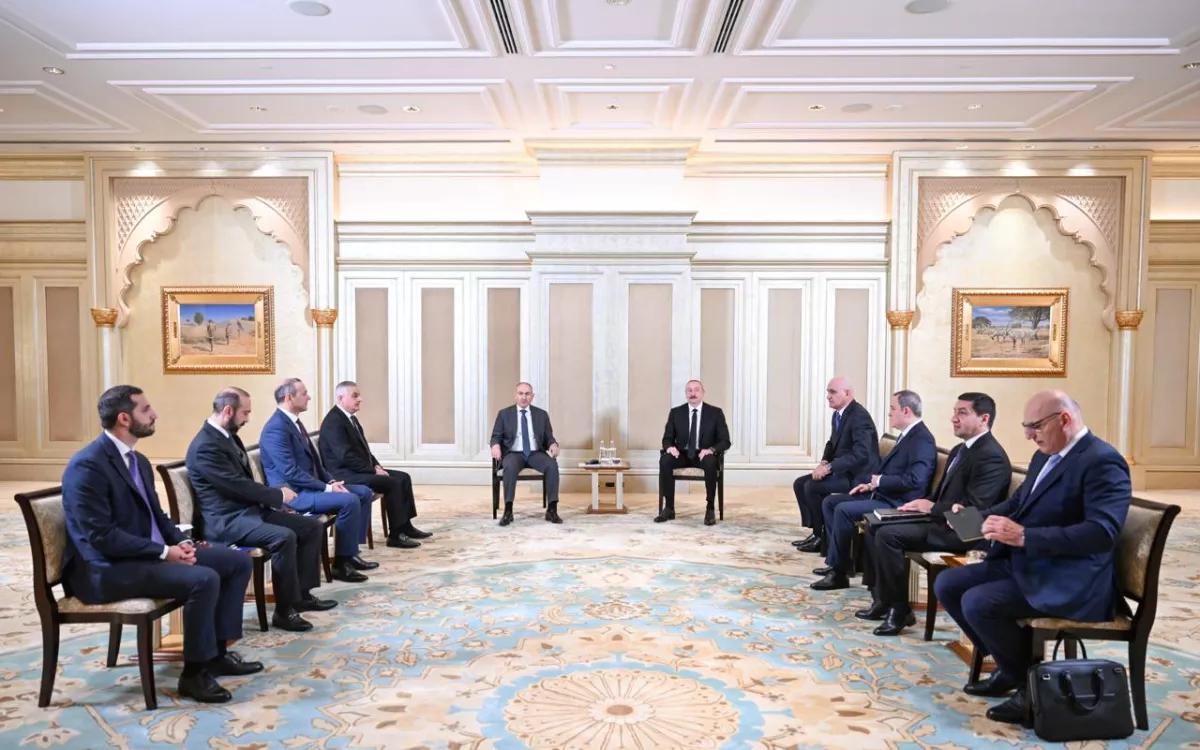From castles of hostility to bridges of peace Initial results of the historic meeting in Abu Dhabi
The meeting between Azerbaijani President Ilham Aliyev and Armenian Prime Minister Nikol Pashinyan in Abu Dhabi has, without exaggeration, become one of the most significant moments in the modern history of the South Caucasus. For the first time in many months, the negotiation process between Baku and Yerevan has gained such depth, substance, and constructive momentum, creating a real opportunity not only for the signing of a peace treaty but also for transitioning to a new stage—one of stable, predictable, and mutually beneficial coexistence between the two states.
Baku’s initiatives: A path to regional peace
Official Baku has consistently emphasised that a peace agreement cannot be signed without amending the Constitution of Armenia, which still enshrines territorial claims against Azerbaijan. This provision remains one of the key obstacles in the negotiation process.
However, the existence of such an obstacle does not negate the pressing need for intensive coordination on all matters that can accelerate the establishment of long-term peace in the region. And the outcome of the meeting between the President of Azerbaijan and the Prime Minister of Armenia in Abu Dhabi clearly confirmed this.
At the heart of the agenda were three key issues: the delimitation and demarcation of the state border, the opening and development of the Zangezur corridor, and preparations for the initialling of a peace agreement. These topics had long remained unresolved and were often exploited as triggers for heightened tensions—including by third parties intent on preserving a state of chronic instability in the South Caucasus.

But reality now dictates new rules: today, both countries are more interested than ever in leaving the past behind. That is why the discussions in Abu Dhabi were remarkably candid. Going beyond the usual exchange of positions, the sides advanced concrete proposals, initiatives, and approaches aimed at removing barriers and finding a balance of interests.
Azerbaijan’s position is crystal clear: once a peace treaty is signed, the country expects to gain a legally recognised border with Armenia, eliminating the possibility of future territorial claims and laying a solid foundation for peaceful neighbourly relations. Meanwhile, the implementation of the Zangezur corridor will provide Azerbaijan with a direct transport link to Türkiye and open up new logistical routes.
Looking at the broader picture, one can affirm that political and economic stability in the region will create a favourable environment for investment, infrastructure development, agriculture, and tourism.
Another key point must be noted: the final establishment of peace in the region would represent both a moral and strategic victory, solidifying the outcomes of the Second Karabakh War.
This is precisely why official Baku initiated the peace process with Armenia, and today’s meeting in Abu Dhabi marks yet another major step towards its logical conclusion.
A historic opportunity for Armenia
The unblocking of regional communications also benefits Armenia, providing it with access to international markets, including Türkiye.
Having remained in a state of self-imposed isolation for many years, Armenia stands to gain real prospects for attracting foreign assistance to rebuild its regions—once it takes tangible steps toward the signing of a peace agreement.

Moreover, Armenia now has a historic opportunity to normalise relations with its neighbours — both Azerbaijan and Türkiye.
Judging by recent statements from official Yerevan, there appears to be a growing recognition of the importance of taking concrete steps to eliminate the threat of a renewed war — a scenario that would undoubtedly pose catastrophic risks to Armenian statehood.
The role of external actors and the need for consolidated efforts
The peace treaty sought by Baku and Yerevan is not merely a legal document — it represents a strategic crossroads that will determine the future of the South Caucasus. In this context, the role of external actors should not be underestimated. It is essential to acknowledge the presence of both supporters and opponents of peace in the region.
The first group consists of those interested in stability, the development of transport corridors, trade, and peaceful coexistence. The second group includes forces that view the peace process as a geopolitical or domestic political failure of their own. These are the actors likely to attempt to destabilise the situation, derail negotiations, and exploit public fears and traumas.
As of today, it can be said that Abu Dhabi was not merely a venue for dialogue — it became a symbol of possibility. A possibility for Azerbaijan and Armenia to finally turn the key in the lock of decades-long confrontation and open the door to an era of peace and prosperity. Such opportunities are rare — and must not be missed.
One can only hope that the current Armenian leadership has now recognised this fully and irreversibly.








